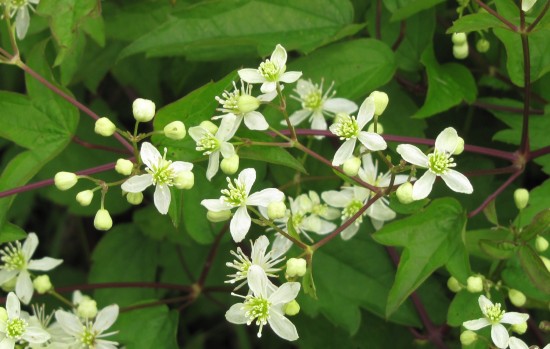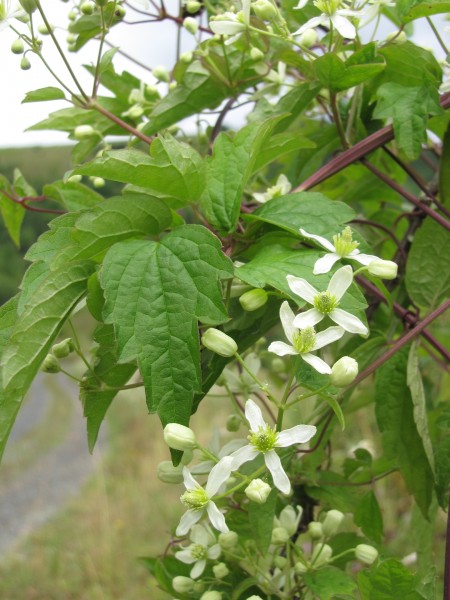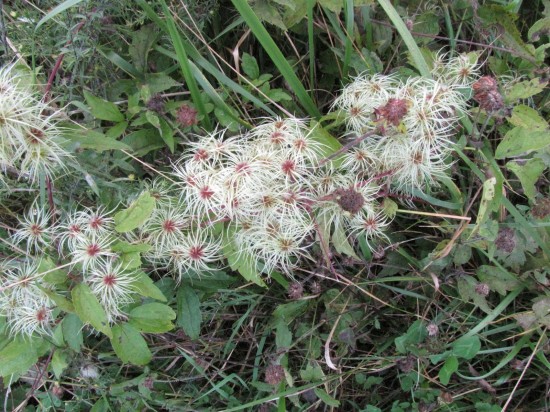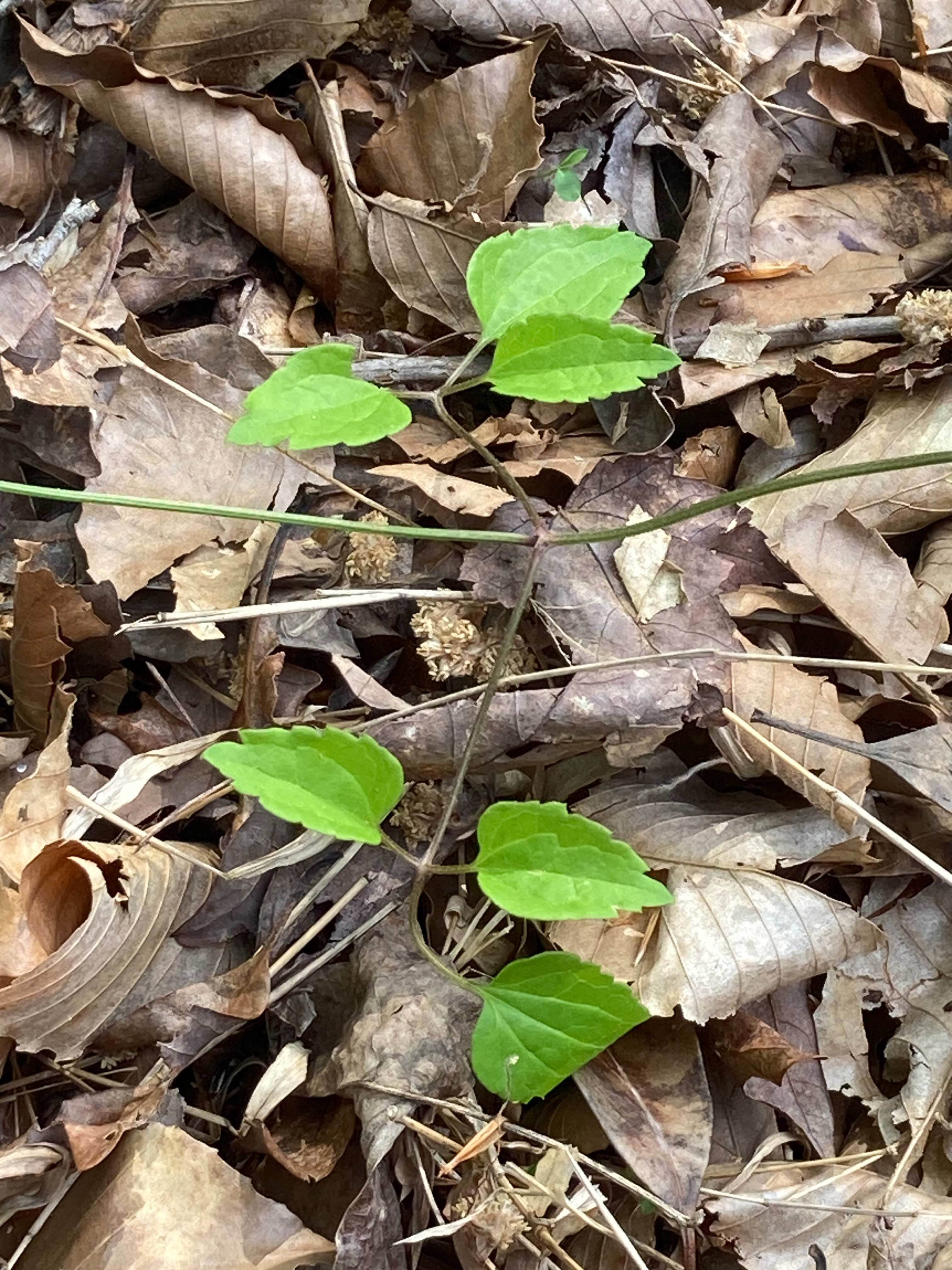NC Native Plant Society:
Plant Details
Clematis virginiana
Virgin's Bower, Devil's darning needles
Scientific Name: |
Clematis virginiana |
|---|---|
Genus: |
virginiana |
Species Epithet: |
Clematis |
Common Name: |
Virgin's Bower, Devil's darning needles |
Plant Type |
Woody Vine |
Life Cycle |
Perennial |
Plant Family |
Ranunculaceae (Buttercup Family) |
Native/Alien: |
NC Native |
Size: |
12-36 ft. |
Bloom Color(s): |
White |
Light: |
Sun - 6 or more hours of sun per day, Part Shade - 2 to 6 hours of sun per day |
Soil Moisture: |
Dry, Moist |
Bloom Time: |
July, August, September |
Growing Area: |
Mountains, Piedmont |
Habitat Description: |
Moist forests, thickets, and openings. |
Leaf Arrangement: |
Opposite |
Leaf Retention: |
Deciduous |
Leaf Type: |
Leaves veined, not needle-like or scale-like |
Leaf Form: |
Compound |
Life Cycle: |
Perennial |
Wildlife Value: |
Not Assigned |
Landscape Value: |
Not Recommended for home landscapes |
State Rank: |
S5: Secure (*Key) |
Global Rank: |
G5 - Secure (*Key) |
State Status: |
W6: Watch List: Regionally Rare (*Key) |
|
Flowers Paynter, Watauga Co, Sept 2011 |
|
|
Leaves Unlike the invasive Sweet Autumn Virginsbower (Clematis terniflora), the native Autumn Clematis (Clematis virginiana) has toothed leaflets. Paynter, Watauga Co, Sept 2011 |
|
|
In seed Paynter, Watauga Co, 2011 |
|
|
Opposite compound leaves with toothed leaflets (the non-native C. terniflora has entire leaflet margins) Panther Branch Natural Area, Orange Co., NC
Bettina Darveaux |
|
Links: |
|
back to top
go to plant details search
go to plant images search
go to gallery home
back to Initial c Gallery
back to orchids
back to Carnivorous Plants
back to Trilliums







